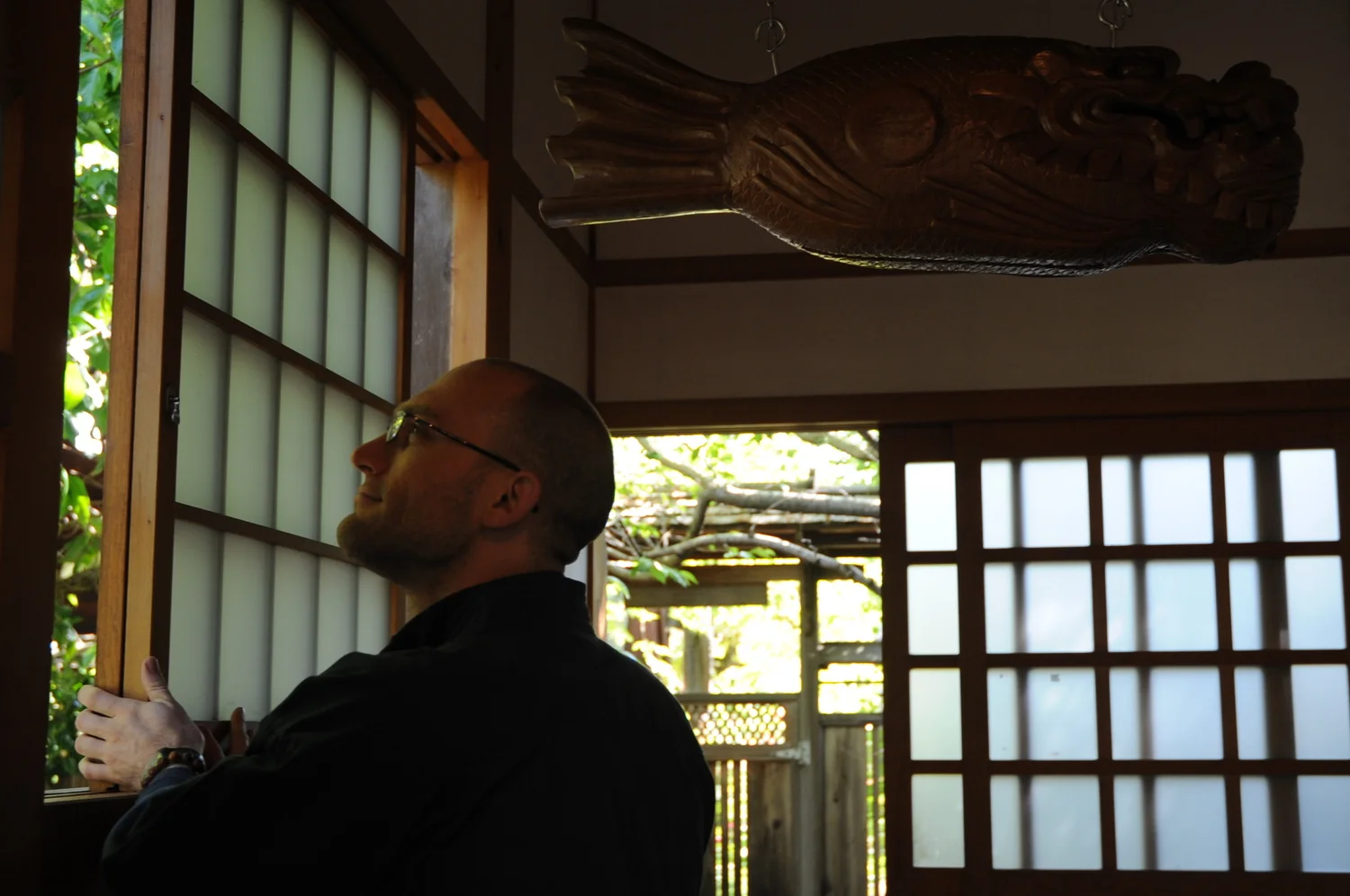Where Buddha sits
Zendo means "Zen Practice Hall" The Kojin-an zendo frame and roof tiles were shipped from Japan, accompanied by five skilled temple carpenters, who assembled the timbers on-site from 1993 to 1994.
Inside, Kojin-an is arranged as a traditional Soto School training hall, with tan raised platforms for meditation along the sides and an altar to Mañjushri, the Bodhisattva of Wisdom, at its center.
In a niche in the south wall is an altar devoted to Shakyamuni Buddha and the two founders of the Soto School, Dogen Zenji and Keizan Zenji. Thus, this building serves the purposes of three traditional temple buildings: the sodo or monastic training hall, the ceremonial Buddha Hall, and the Founders’ Hall.
What to expect
Our teaching style is organic and inter-relational, rather than linear or regimented, this may best suit people who practice without a need for frequent formal instruction. This free-form style is possible because we are a small family temple rather than a training monastery or a large Zen center.
Our small size and family-run nature allow us to be creative and flexible. However, we may not have the resources to accommodate the needs of every individual. The traditional Japanese design of the buildings means that much of the site is not readily accessible to wheelchairs, and access may be difficult for those with impaired mobility. It is possible to sit in a chair during zazen and other events, but shoes must be removed before entering. Natural wood-based incense is used according to the Soto Zen practice, however the zendo is naturally well ventilated.
If you have any questions about the space or your ability to participate because of health or comfort please do not hesitate to contact us.




